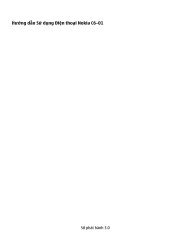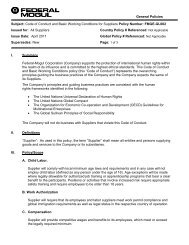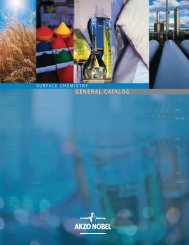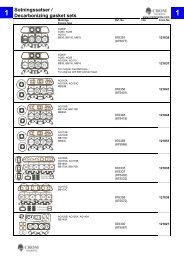You also want an ePaper? Increase the reach of your titles
YUMPU automatically turns print PDFs into web optimized ePapers that Google loves.
Tapered Roller <strong>Bearings</strong><br />
The application of precision tapered roller bearings is not just limited<br />
to machine tools. Wherever spindles turn and rotational accuracy<br />
is essential to the machine’s per<strong>for</strong>mance, precision tapered roller<br />
bearings are encountered. Other typical applications are printing<br />
presses, optical grinders, profile cutters, indexing tables, precision<br />
drives and measuring gauges.<br />
SINGLE-ROW BEARINGS<br />
TS – single row (1)<br />
This is the basic and the most widely used type<br />
of tapered roller bearing. It consists of two main,<br />
separable parts: the inner ring (cone) assembly<br />
and the outer ring (cup). It is usually fitted as one<br />
of an opposing pair. During equipment assembly,<br />
single-row bearings can be “set” to the required<br />
clearance (endplay) or preload condition to optimize<br />
per<strong>for</strong>mance.<br />
TSF – single-row, with flanged<br />
outer ring (1)<br />
This variation on the basic single-row bearing,<br />
type TSF has a flanged outer ring to facilitate axial<br />
location and accurately aligned seats in a throughbored<br />
housing.<br />
TWO-ROW BEARINGS<br />
TDO – double outer race<br />
This has a one-piece (double) outer race and two<br />
single inner races and is usually supplied complete<br />
with an inner ring spacer as a pre-set assembly.<br />
This configuration gives a wide effective bearing<br />
spread and is frequently chosen <strong>for</strong> applications<br />
where overturning moments are a significant<br />
load component. TDO bearings can be used in<br />
fixed (locating) positions or allowed to float in the<br />
housing bore, <strong>for</strong> example, to compensate <strong>for</strong> shaft<br />
expansion.<br />
TXR – crossed roller bearing (1)<br />
A crossed roller bearing is two sets<br />
of bearing races and rollers brought<br />
together at right angles – with<br />
alternate rollers facing opposite<br />
directions – within a section height<br />
not much greater than that of a single bearing. The steep angle,<br />
tapered geometry of the bearing causes the load-carrying center<br />
(1) These bearing types are described in detail in the bearing data tables at the end of<br />
this publication.<br />
of each of the races to be projected along the axis, resulting in a<br />
total effective bearing spread many times greater than the width<br />
of the bearing itself. This type of bearing offers a high resistance<br />
to overturning moments.<br />
The normal design of the bearing is type TXRDO, which has a double<br />
outer race and two inner races, with rollers spaced by polymer<br />
separators.<br />
HIGH-SPEED BEARINGS<br />
For many applications, notably in the machine tool industry, bearings<br />
are required to run at speeds in excess of those <strong>for</strong> which standard<br />
bearings are designed.<br />
TSMA – single-row, with axial oil holes<br />
The TSMA type is a single-row bearing with axial oil<br />
holes <strong>for</strong> lubrication of the critical roller-rib contact<br />
area to ensure adequate lubrication at high speeds.<br />
The concept works by capturing oil in a manifold<br />
(attached to the inner ring), which is then directed<br />
to the rib-roller contact area through holes drilled<br />
axially through the large rib.<br />
TSHR – Hydra-Rib bearing with preload<br />
adjustment device (1)<br />
The Hydra-Rib bearing has a “floating” outer<br />
ring rib controlled by hydraulic or pneumatic<br />
pressure, which ensures that the required preload<br />
is maintained irrespective of the differential<br />
expansions or changes in loading taking place<br />
within the system.<br />
The list of part numbers in the TS and TSF design styles tables is<br />
not exhaustive. These represent most of the common selections<br />
<strong>for</strong> the precision machine tool industry. Many tapered roller<br />
bearings currently are manufactured to “standard” precision<br />
classes (Class 3 or 0/ C or B) but can be readily produced<br />
to higher precision levels. Bearing modifications such as<br />
conversion to a two row design, a high speed TSMA, or use of<br />
ceramic rolling elements to meet specific application demands<br />
can usually be accommodated. Please contact your <strong>Timken</strong><br />
representative <strong>for</strong> more in<strong>for</strong>mation.<br />
B<br />
A<br />
TIMKEN MACHINE TOOL CATALOG 111







